The Tulip Chair - A Union of Simplicity and Plasticity
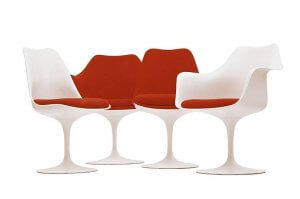
The Tulip chair is a fine example of contemporary furniture. In its design, simplicity and plasticity come together to show all the possibilities that it has for interior design.
Pieces like the Tulip chair are only possible thanks to the long evolution of furniture design. Innovation and originality are unmistakably present in its design. In fact, the chair itself is actually a reflection of an artistic concept.
We want to highlight that the chair isn’t appropriate for just any decor style. However, the chair can add a sophisticated and vanguard air to the settings where it will work.
Getting to know Eero Saarinen
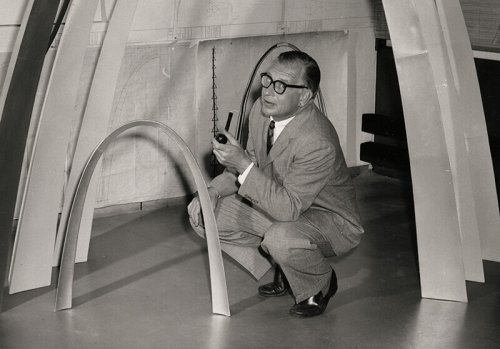
Designer of the Tulip chair Eero Saarinen was born in Kirkkonummi, Finland in 1910. However, he spent most of his youth in the United States, which put him in contact with the most important interior designers of the 20th century as well as with the vanguard trend.
Later, he also spent some time in Europe, studying sculpture at the Académie de la Grande Chaumière in Paris. Afterward, he returned to the United States to study Architecture at the University of Yale. With his studies, he continued to develop a strong interest in interior design and new ideas for decor.
He created the chair in 1956 and with the company Knoll, began to manufacture more models to sell in stores. He worked towards success in both the United States and Europe, which were the biggest markets at the time.
Saarinen gained international fame with his Tulip chair.
The 5 main characteristics of the Tulip chair
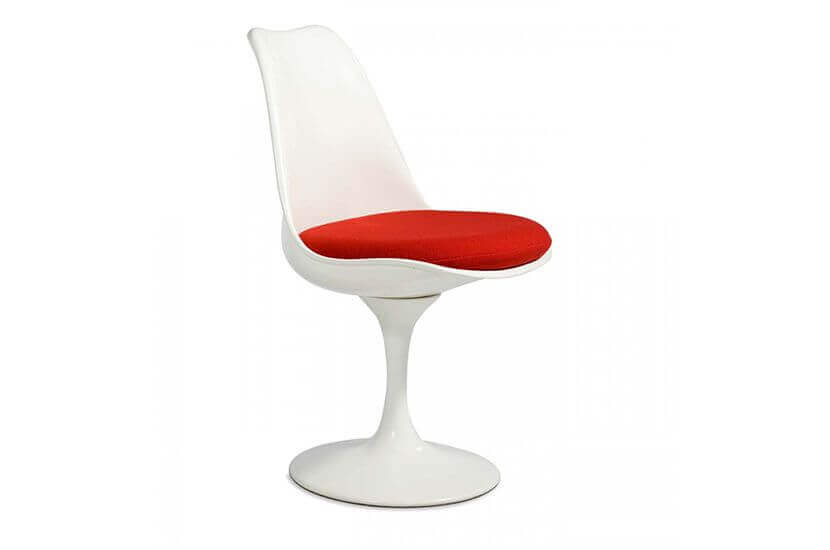
As you can see above, this chair has a contemporary feel. The Tulip chair breaks through traditional and classical lines, which makes it incompatible with rustic or country settings. Instead, it fits young, modern spaces better. Let’s take a look at some characteristics:
- The plasticity of the chair is apparent all around. Curved lines make up almost the entire chair from the base to the back. The material of the pieces looks very smooth and bendable.
- Simplicity is another obvious trait. There are no pieces that stick out or hang over. The chair has a sense of continuity as one single material makes up the chair. In addition, it offers functionality.
- The cushion helps create a contrast between the materials and the appearance of the chair itself. Structurally, it’s very different from the chair’s general structure. At the same time, the red color of the cushion creates a strong pop of color that draws eyes.
- There are two types of Tulip chairs: with and without armrests. The models with armrests have a more hermetic design whereas the other is more open and has a simpler format.
- Lastly, the chair has a very clean modern style. The forms are slim and delicate all throughout the design.
Simplistic colors
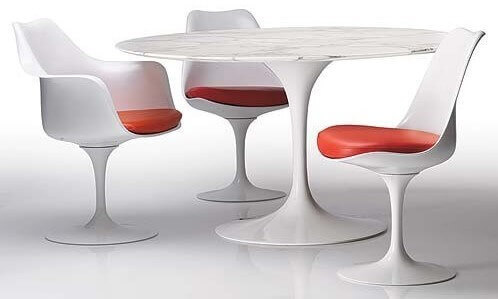
As for color, they’re not very hard to match. The chair only has two colors, red and white, making matching actually quite easy. While there are other colors available as well, the red and white models are the original design.
The intense red creates a contrast with the white parts of the chair. They contrast in a way to highlight that intensity even more. The white serves as the base color or a backdrop to the red.
The reduction of forms fits well with the simple color scheme.
Where can you buy a Tulip chair?
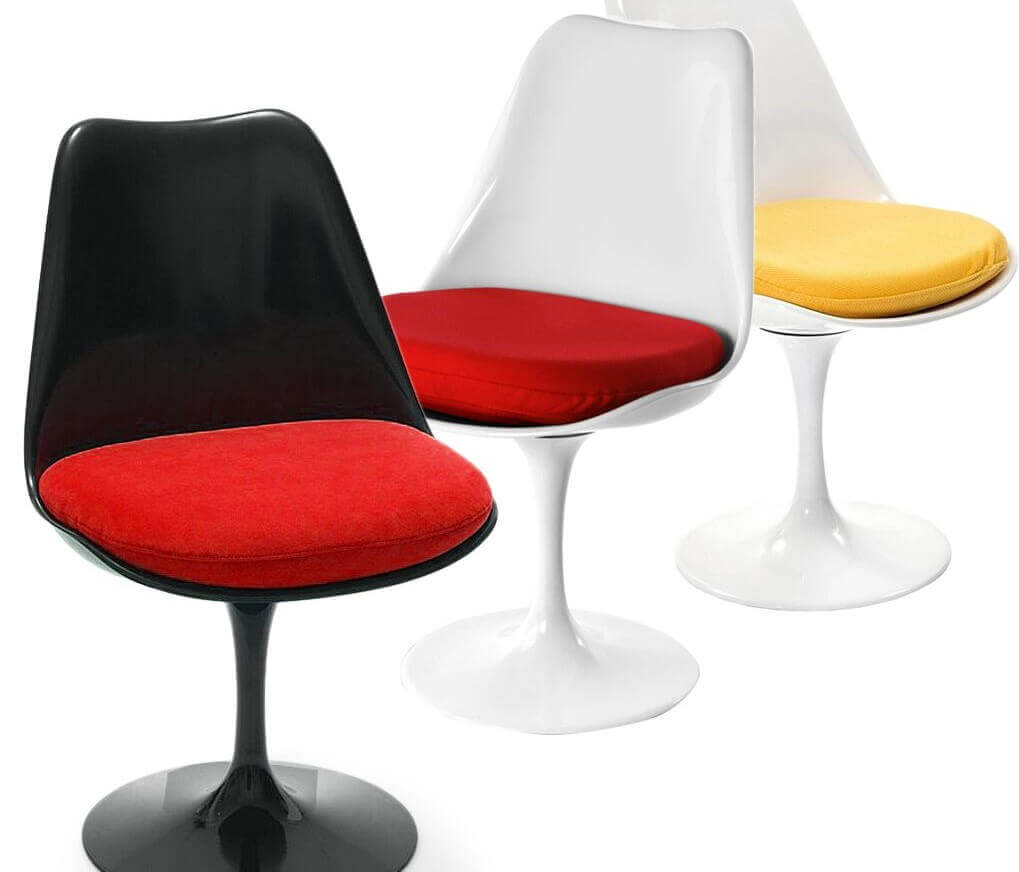
It’s not easy to find them at home decor stores. Instead, try the internet and browse online stores. These chairs might have a big price tag, but don’t forget that they’re a worthy find for a collection.
You can find them on Amazon as well as other websites like Muebledesign, Naharro, and Westwing. Try to stay clear of imitations or fakes.
The Tulip chair is a fine example of contemporary furniture. In its design, simplicity and plasticity come together to show all the possibilities that it has for interior design.
Pieces like the Tulip chair are only possible thanks to the long evolution of furniture design. Innovation and originality are unmistakably present in its design. In fact, the chair itself is actually a reflection of an artistic concept.
We want to highlight that the chair isn’t appropriate for just any decor style. However, the chair can add a sophisticated and vanguard air to the settings where it will work.
Getting to know Eero Saarinen

Designer of the Tulip chair Eero Saarinen was born in Kirkkonummi, Finland in 1910. However, he spent most of his youth in the United States, which put him in contact with the most important interior designers of the 20th century as well as with the vanguard trend.
Later, he also spent some time in Europe, studying sculpture at the Académie de la Grande Chaumière in Paris. Afterward, he returned to the United States to study Architecture at the University of Yale. With his studies, he continued to develop a strong interest in interior design and new ideas for decor.
He created the chair in 1956 and with the company Knoll, began to manufacture more models to sell in stores. He worked towards success in both the United States and Europe, which were the biggest markets at the time.
Saarinen gained international fame with his Tulip chair.
The 5 main characteristics of the Tulip chair

As you can see above, this chair has a contemporary feel. The Tulip chair breaks through traditional and classical lines, which makes it incompatible with rustic or country settings. Instead, it fits young, modern spaces better. Let’s take a look at some characteristics:
- The plasticity of the chair is apparent all around. Curved lines make up almost the entire chair from the base to the back. The material of the pieces looks very smooth and bendable.
- Simplicity is another obvious trait. There are no pieces that stick out or hang over. The chair has a sense of continuity as one single material makes up the chair. In addition, it offers functionality.
- The cushion helps create a contrast between the materials and the appearance of the chair itself. Structurally, it’s very different from the chair’s general structure. At the same time, the red color of the cushion creates a strong pop of color that draws eyes.
- There are two types of Tulip chairs: with and without armrests. The models with armrests have a more hermetic design whereas the other is more open and has a simpler format.
- Lastly, the chair has a very clean modern style. The forms are slim and delicate all throughout the design.
Simplistic colors

As for color, they’re not very hard to match. The chair only has two colors, red and white, making matching actually quite easy. While there are other colors available as well, the red and white models are the original design.
The intense red creates a contrast with the white parts of the chair. They contrast in a way to highlight that intensity even more. The white serves as the base color or a backdrop to the red.
The reduction of forms fits well with the simple color scheme.
Where can you buy a Tulip chair?

It’s not easy to find them at home decor stores. Instead, try the internet and browse online stores. These chairs might have a big price tag, but don’t forget that they’re a worthy find for a collection.
You can find them on Amazon as well as other websites like Muebledesign, Naharro, and Westwing. Try to stay clear of imitations or fakes.
All cited sources were thoroughly reviewed by our team to ensure their quality, reliability, currency, and validity. The bibliography of this article was considered reliable and of academic or scientific accuracy.
- Pesudo Chiva, María Carmen: Formas curvas alabeadas, Cultivalibros, 2009.
- Serraino, Pierluigi: Eero Saarinen: 1910-1961; un expresionista estructural, Taschen, 2005.







